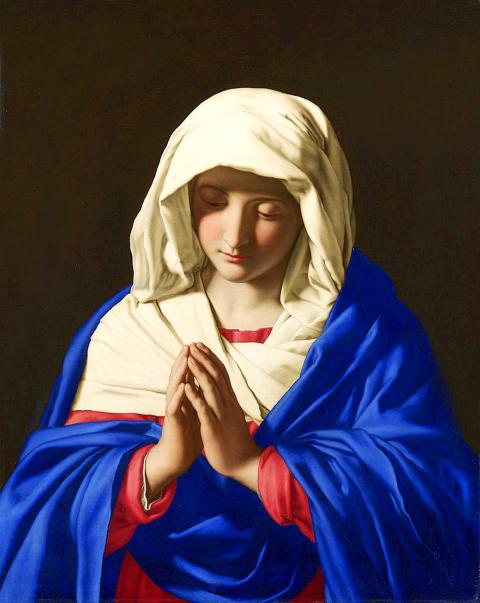In June 1723, Johann Sebastian Bach officially took the position of Kapellmeister and Cantor et Director Musices at the St. Thomas Church in Leipzig, Germany, a position he would hold for the next 27 years until his death. At the time, Leipzig was predominantly a Lutheran city, and St. Thomas was the most important church in Leipzig. Accordingly, the Thomaskantor was responsible for the religious music of all churches, large and small, within the entire city, and was tasked with preparing and directing musical performances during the Sunday services for both the St. Thomas and St. Nicholas churches in the city. In the first year following his appointment, Bach devoted himself to composing religious music, writing cantatas based on various themes for the special festivals within the liturgical year of the church, and conducting the performances.
The Christmastide and the week leading up to Easter are the two most important festive periods in the traditional Christian calendar, and this was true, too, in Leipzig. For Bach, who took up this important position in June, the first major festival before him was the Christmas season. In line with the local Christian traditions observed in Leipzig, wherein the Magnificat was sung in German during regular Sunday vespers and performed in Latin on high feasts in the concerted form, Bach wrote a new Magnificat for that year’s Christmas period.
The Magnificat is one of the most ancient Christian hymns, its name deriving from the incipit, or opening phrase, of the Latin translation of the canticle, with the text taken directly from the Gospel of St. Luke of the New Testament of the Bible. Countless versions of the Magnificat had been written by different composers in the past. Under Bach’s pen, however, the canticle was transformed and expanded into a five-part choral setting. In order to enhance the festive atmosphere, Bach inserted into his Magnificat four seasonal laudes popular among citizens of Leipzig at the time, relating biblical accounts preceding the birth of Jesus Christ.

Photo: Wikimedia Commons
照片:維基共享資源
The first interpolation is a hymn composed by Martin Luther, titled Vom Himmel hoch da komm ich her (“From Heaven Above to Earth I Come”), referring to the angels’ annunciation to the shepherds of the birth of Jesus. The second and third laudes, Freut euch und jubilieret (Rejoice and celebrate) and Gloria in excelsis Deo (Glory to God in the highest) are messages relayed by the angels, for which Bach respectively utilizes polyphonic and chordal styles to emulate the works of his predecessors. The former is a sprightly minuet, the latter a rather rustic chorale. The fourth laude, Virga Jesse floruit (The branch of Jesse flowers), is an operatic duet written in gigue by Bach for soprano and bass, representing Mary and Joseph expressing joy on discovering that Mary is expecting a child.
Bach had originally envisioned his Magnificat to be performed on the large organ loft in the West Wing of St. Thomas, facing the main altar, and that the four seasonal laudes would be performed by a second small orchestra and choir on the smaller loft in the East Wing of the church, with the intention that this would create a stereophonic effect. Despite the fact that the piece was eventually performed in St. Nicholas Church, on the choir loft next to a smaller pipe organ, the sheer force of Bach’s choral arrangement was still able to produce the joyous, lively festive atmosphere.
As the piece was drawing to its close, at the part where the lyrics were declaring sicut erat in principio (as it was in the beginning), Bach re-introduced the opening melody, elucidating through music the profound meaning of the lyric. The ingenious orchestral scoring and choral arrangements, the faithful musical setting of the Bible, the insertions of lyrics from diverse sources, the application of different Baroque dances, all enhanced the richness of the music and achieved an imaginative musical interpretation of the meaning of the words. These characteristics would become important elements employed in the Passion music that Bach would write the following year.
(Translated by Paul Cooper, Taipei Times)
一七二三年六月,約翰‧塞巴斯蒂安‧巴赫正式接任萊比錫聖多瑪斯教堂的唱詩班指揮暨音樂總監,從此擔任該職位長達二十七年,直到過世。當時的萊比錫以信奉路德教派為大宗,而聖多瑪斯教堂的地位最為崇高,該教堂的音樂總監可說是掌管全城大小教堂的各類宗教音樂,還須負責籌畫聖多瑪斯教堂和聖尼古拉教堂搭配每週日禮拜儀式的音樂演奏。甫接下音樂總監職位的第一年,巴赫埋首於創作宗教音樂,為教會禮儀年的各個特殊節日寫下不同主題的清唱劇,並在儀式進行間指揮這些作品演出。
在基督教傳統中,一年中最重要的特殊節日莫過於耶誕節前後以及耶穌受難週到復活節的兩段時間,當時的萊比錫也不例外。六月才到職的巴赫,懷抱著大刀闊斧全面革新教會音樂的決心,第一個面對的大型特殊節日就是耶誕節。巴赫遵循萊比錫當地的宗教音樂傳統──在一般週日的晚禱禮拜儀式中,以德文唱頌《尊主頌》,大型節日則以演奏會形式演出拉丁文版本──為當年的耶誕節創作新的《尊主頌》作品。
《尊主頌》是最古老的基督教頌歌之一,得名於拉丁文譯文的第一個詞,整段頌歌直接取自於聖經新約中的《路加福音》,歷來多位作曲家都曾以此為本,相關創作不計其數。在巴赫的筆下,《尊主頌》搖身一變,被擴充為五聲部合唱作品。為了增添耶誕的節慶氣氛,巴赫還在《尊主頌》中間插入當時萊比錫市民相當熟悉的四段耶誕讚歌,依序描寫與耶穌誕生有關的聖經故事。
第一段插入曲來自馬丁路德創作的德文讚美詩《從至高天我今降臨》,指涉天使向牧羊人報佳音的情節;第二段和第三段插入曲《歡欣並慶祝吧》與《榮耀歸與最高神》,來自天使傳遞的訊息,是巴赫分別用複音風格與和弦式風格模仿前幾任樂長的創作,前者是輕快雀躍的小步舞曲,後者則是樸拙穩重的聖詠曲;如歌劇般的第四段插入曲《從耶西的新枝長出嫩芽》則是巴赫為女高音和男低音創作的吉格舞曲二重唱,恰如其分地表現瑪利亞和約瑟得知懷孕的欣喜。
在巴赫原本的計畫中,《尊主頌》將演奏於聖多瑪斯教堂西側、面對祭壇的大型管風琴高台上,四段額外增添的合唱曲則由第二組小型樂團與合唱團,在教堂東側較小的高台上演奏,如此一來就會產生立體聲的效果。儘管後來這部作品改於聖尼古拉教堂演出,只有單面管風琴旁設置演奏台,巴赫精心設計的雙合唱團編制仍然成功營造出歡欣活潑的節慶氣氛。
在作品尾聲,當音樂進行到歌詞「正如同最初那時」,巴赫重現整部作品的開頭旋律,直接用音樂表現出頌歌的深意。樂團和合唱團的編制與配置巧思、忠實按聖經所載段落譜曲、間或插入不同來源的詩歌、揉入各式舞曲風格,這些技巧都增添了音樂的豐富性,以充滿想像力的音樂詮釋出文字的深意。這些特色都成為巴赫於隔年創作受難曲時的重要音樂元素。
(台北時報章厚明撰)

Whether they are a Siamese, Persian, Maine Coon, or Domestic Shorthair, there are hundreds of millions of cats living with people around the world. But despite their popularity as pets, the history of cat domestication has remained difficult for scientists to decipher. A new genome study is providing some insight into the matter by determining the timing of a key milestone in feline domestication - the introduction of domestic cats into Europe from North Africa. Domestic cats pounced into Europe roughly 2,000 years ago in early imperial Roman times, the researchers found, probably thanks to maritime trade. Some of these furry trailblazers

You’re half-asleep with your head resting on the desk during your lunch break. All of a sudden, your leg kicks violently, your head snaps up, and you’re wide awake in a split second. This __1__ sensation is called a “hypnic jerk,” a common phenomenon that strikes just as your body starts to relax, but your brain mistakenly hits the panic button. A hypnic jerk is an involuntary muscle spasm that usually occurs during the __2__ from wakefulness to sleep, especially during the early stages of sleep. As the body begins to relax, muscles loosen and breathing slows down. One

Scientists at Argentina’s Marambio Station in Antarctica have detected high levels of ammonia gas in the air near an “Adelie penguin” colony. The ammonia, released from nitrogen-rich penguin guano, reacts with sulfur compounds emitted by oceanic plankton to form aerosol particles. These particles boost cloud formation and can sometimes lead to fog. Scientists found that even after the penguins left the area, the remaining guano continued to give off significant amounts of ammonia. Clouds created by the guano can influence the local climate by either reflecting sunlight or trapping heat, depending on environmental conditions. In other words, penguin waste

In English, “name idioms” are part of what makes English fascinating. Let’s put a few examples under the microscope. Doubting Thomas This expression stems from the Bible. Thomas, one of Jesus’s disciples, refused to believe Jesus had been resurrected from the dead. He declared he wouldn’t accept it until he could see the nail marks in Jesus’s hands and touch his wounds himself. Today, this idiom refers to someone who won’t believe something without concrete evidence. For instance, if your friend’s expertise is reliable, but you’re still suspicious, you might be a “doubting Thomas.” Smart Aleck The origin of this phrase likely comes from